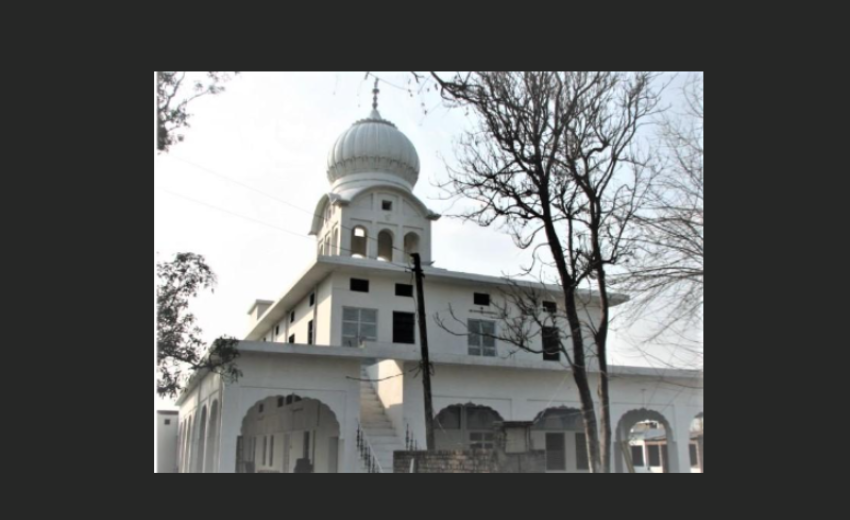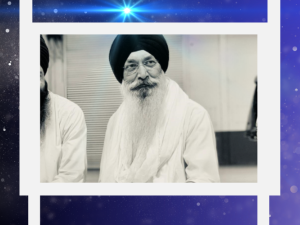Bajrur and Sarthali villages are near villages in Rupnagar district. There is a difference of one and a half kilometers between the two villages. In the 16th century, Gujjars and Rangars lived in Bajrud and there were Hindus in the nearby village Sarthali. Paende Khan belonged to the village of Bajrud. Sarthali is an old village, which is mentioned in Mahan Kosh of Bhai Kahan Singh Nabha. Guru Gobind Singh came there for the battle of Bajrud with the Mughals. This battle is also described in Shri Gur Pratap Suraj Granth by Bhai Santokh Singh Chudamani.
The reason for the war was the violent and insulting behavior of Muslims of Bajrur due to which the Hindus of Sarthali and the surrounding areas went to Guru Gobind Singh Ji and asked for protection. In fact, the Gujjar and Rangar Muslims, forcibly picked up unmarried girls of the Hindus, especially the Pandits and Khatris and converted them to Islam and by performing forcible Nikah and settled them in their homes. To protect them from these and other oppressions, these Hindus went to Guru Ji and pleaded, "Guru Ji, help us. We people are very tired of depredations of Gujjars and Ranghars. Our religion is perishing. They take away our daughters convert them and marry. We have lost our dignity”.
Hearing the cry of the harrased Hindus , Guru Ji left Anandpur and came to Sarthali and camped at the place where Gurudwara Sri Ranthumb Sahib Sarthali is present today. He prepared, the Khalsa under the command of Sahibzada Ajit Singh and marched onto Bajrud. The Sikh forces went to Bajrud and surrounded the village. (3) The battle continued for many days. But the Gujjars and Rangrahs could not be defeated. On the upstream side of the village Bajrud there was a well whose water had an intoxicating power. These people used to drink the water of this well and become intoxicated and fight in the same way as one fights by drinking bottles of alcohol. It was also rumoured that the Muslims had recited some kalma in the water of this well, and after drinking the water, they became intoxicated.
Guru ji came to know that these people drink the water of the well and get drunk and fight out with vigours, so Guru ji first surrounded the well and then destroyed it in such a way that no trace was visible. By destroying the well, Guru ji attack Ranghars and Gujjars so fearlessly that they suffered heavy losses. (1)
Their leader Chittu and Mithu along with some other villagers were killed. (2)(3) It was also mentioned that there were 1400 relatives of the Gujjars and Rangars who came to help, were killed, there was no end to the causalities of the others. Guruji destroyed the city to give a message to the Rangars (4)(5) Guru Sahib stayed here for 3 days and 3 nights. From here Guru Sahib left for Basali. After that, the villagers never again attacked or detained the Sikhs. (2)
Gurdwara Sri Ranthumb Sahib is located on the outskirts of Sarthali village in memory of Guru Ji.
References
1. Dhanna Singh Chahal, Gur Tirth Cycle Yatra, 11 March 1930 to 26 June 1934) (Editor Chetan Singh), 2016, European Punjabi Sath Walasal UK.p.908
2. Harjinder Singh Dilgir (1997) Sikh Reference Book p. 170.
3. Surjit Singh Gandhi (2007). History of the Sikh Gurus Retold: 1606-1708 CE. Atlantic Publishers and District P. 821. ISBN 9788126908585.
4. S. Gajrani (2000). Guru Gobind Singh Personality and Vision. Vision and Enterprise, p. 42. ISBN p. 9089788186769133.
5. McAuliffe, Max Arthur (1996) [1909], Sikhism: Its Gurus, Scriptures, and Authors. P. 106. ISBN 978-81-86142-31-8. OCLC 1888987





